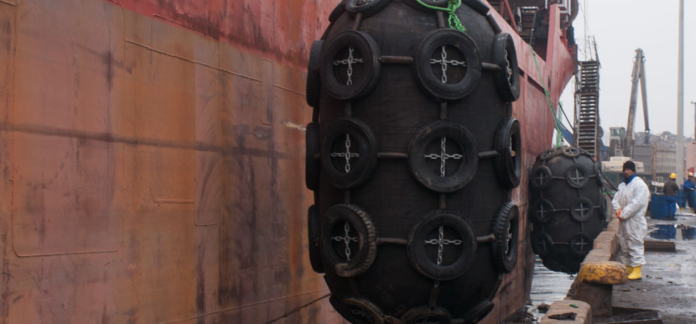Fenders are used as buffers between boats and docks. They are also used to protect boats from damage caused by waves, such as when you’re moored at sea.
Fenders such as a Yokohama fender are usually made of foam or rubber, but they can also be made of rope or other materials. Most fenders have a weighted nose that keeps them afloat and provides more protection for your boat.
There are two main types of boat fenders:
- Inflatable: Inflatable boat fenders come in many shapes, sizes, and colors. They’re easy to store and use and can be inflated with a pump if needed. They’re great for dinghies and other small craft but aren’t suitable for larger boats because they don’t provide enough protection against waves.
- Fixed: Permanent fenders are fixed to the sides of your boat using ropes or screws. They usually have a rough texture that helps keep them in place on rough seas or when docking at high speeds.
Installation Criteria for Pneumatic Fenders
There are different ways to install pneumatic fenders, depending on the type of device and where you want them placed. Inflatable pneumatic fenders will usually come with instructions on how they should be mounted and inflated. If you’re planning on installing a set of these bumpers yourself, make sure that you get a set of instructions along with them so that you know exactly how they should be mounted and inflated. This way, it’ll be easier for you to put them up without any problems at all!
Factors Determining the Choice of Fender
There are several factors that affect the choice of fenders. Here are some of them:
Vessel Dimensions
The type of vessel that is being berthed also determines which kind of fender should be used. For example, for a large vessel with deep draft it may require big fenders, whereas for smaller vessels with shallow draft normal size fenders would do well enough.
Port Environment
Another important factor is the environment where the vessel is being moored as this can have an effect on which type of fender should be used. For example, if there is soft ground then rubber or plastic fenders would be suitable because they absorb shocks better than metal ones; but if there is hard ground then metal or steel.
Presence of a Guide when Berthing
When berthing a vessel or ship, there should be someone guiding it into its berth so as to avoid any damage to either vessel or ship during the docking process. This guide helps in determining the kind of fender needed since it determines how far away from each other these vessels should be while they are being docked together so as not to cause any damages during this process.
Conclusion
The more fenders you have, the more likely it is that your boat will be able to avoid a collision. However, if you have too many fenders, the boat may not be able to dock at all (because its hull will be pushed too far above the water line). So how many fenders do you need?
The answer is: It depends on your hull design and how big your dock is. If your boat is designed with a flat bottom and relatively shallow draft, then one or two pneumatic fenders should be sufficient. If your boat has a deep draft and/or a rounded hull bottom (like most sailboats), then four or five fenders should do the trick. However, the size of the boat still matters.













